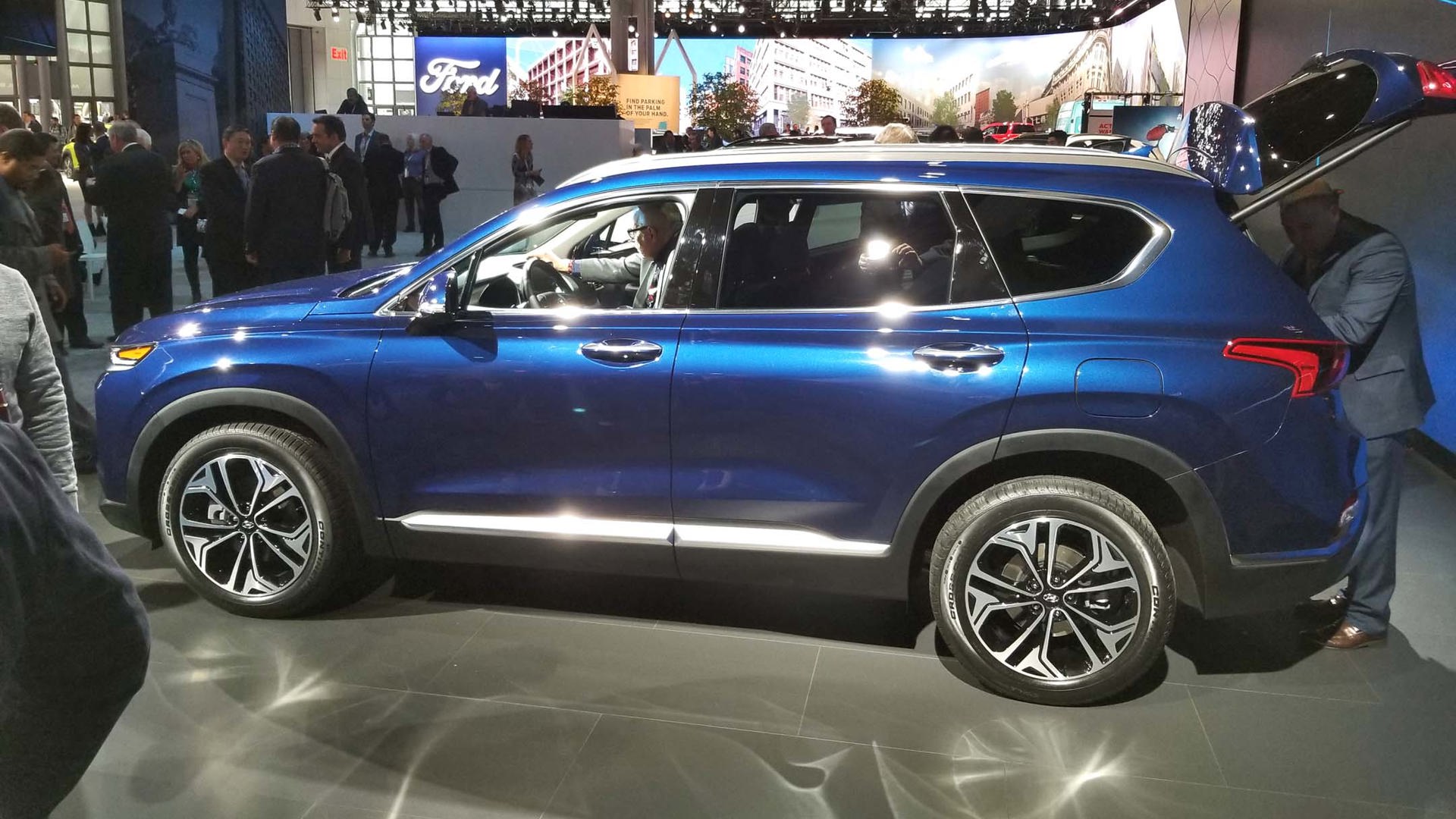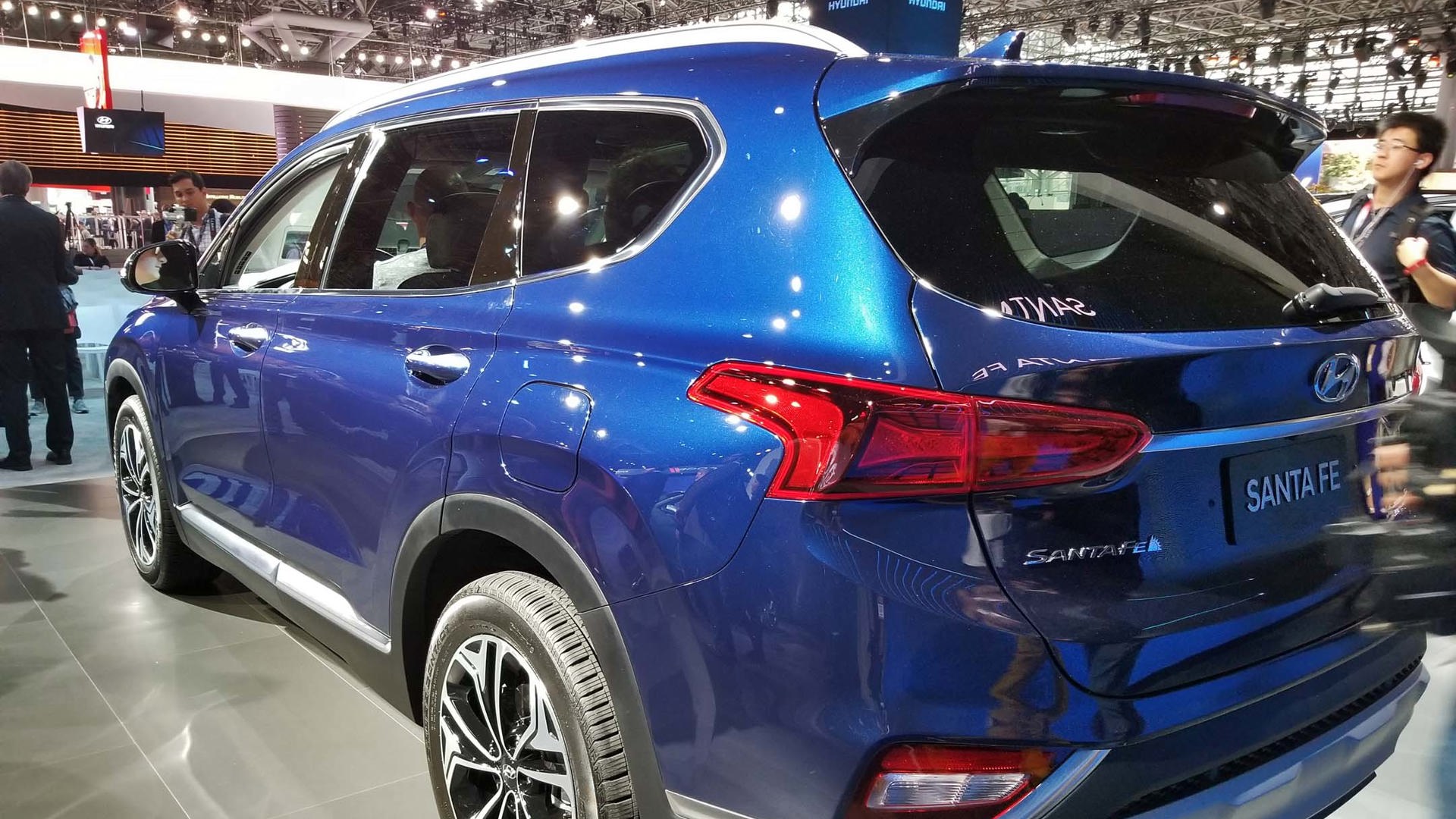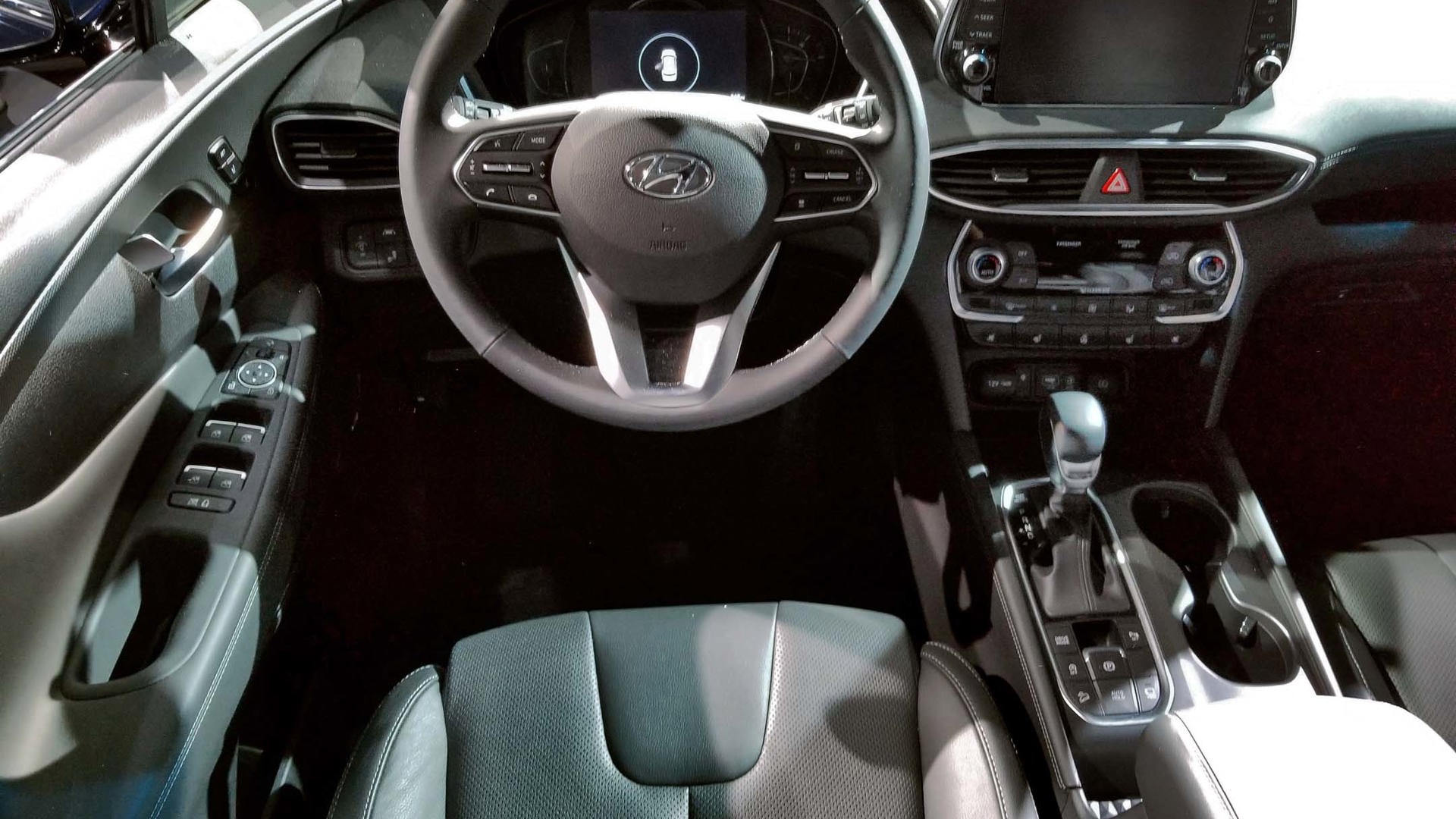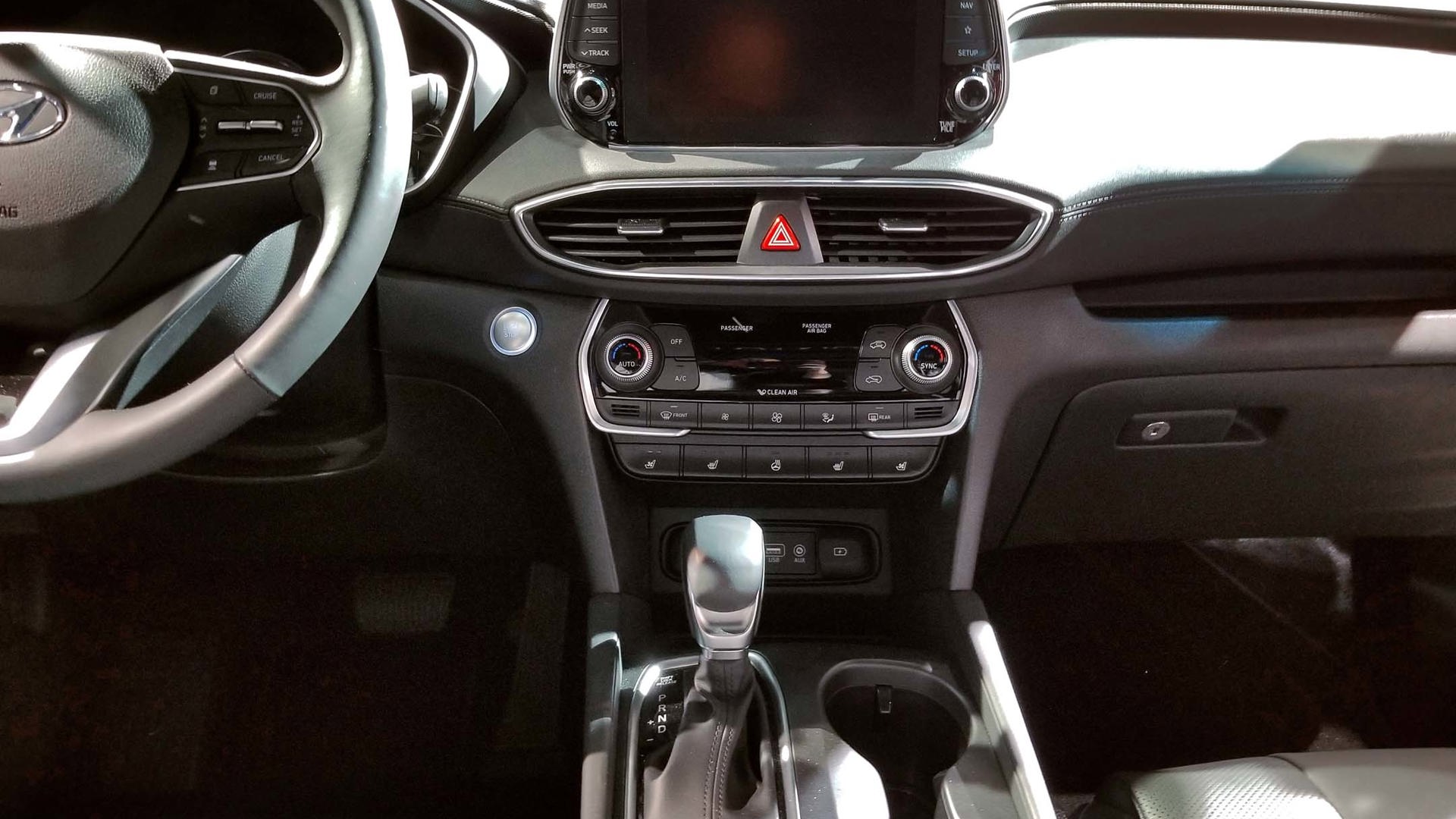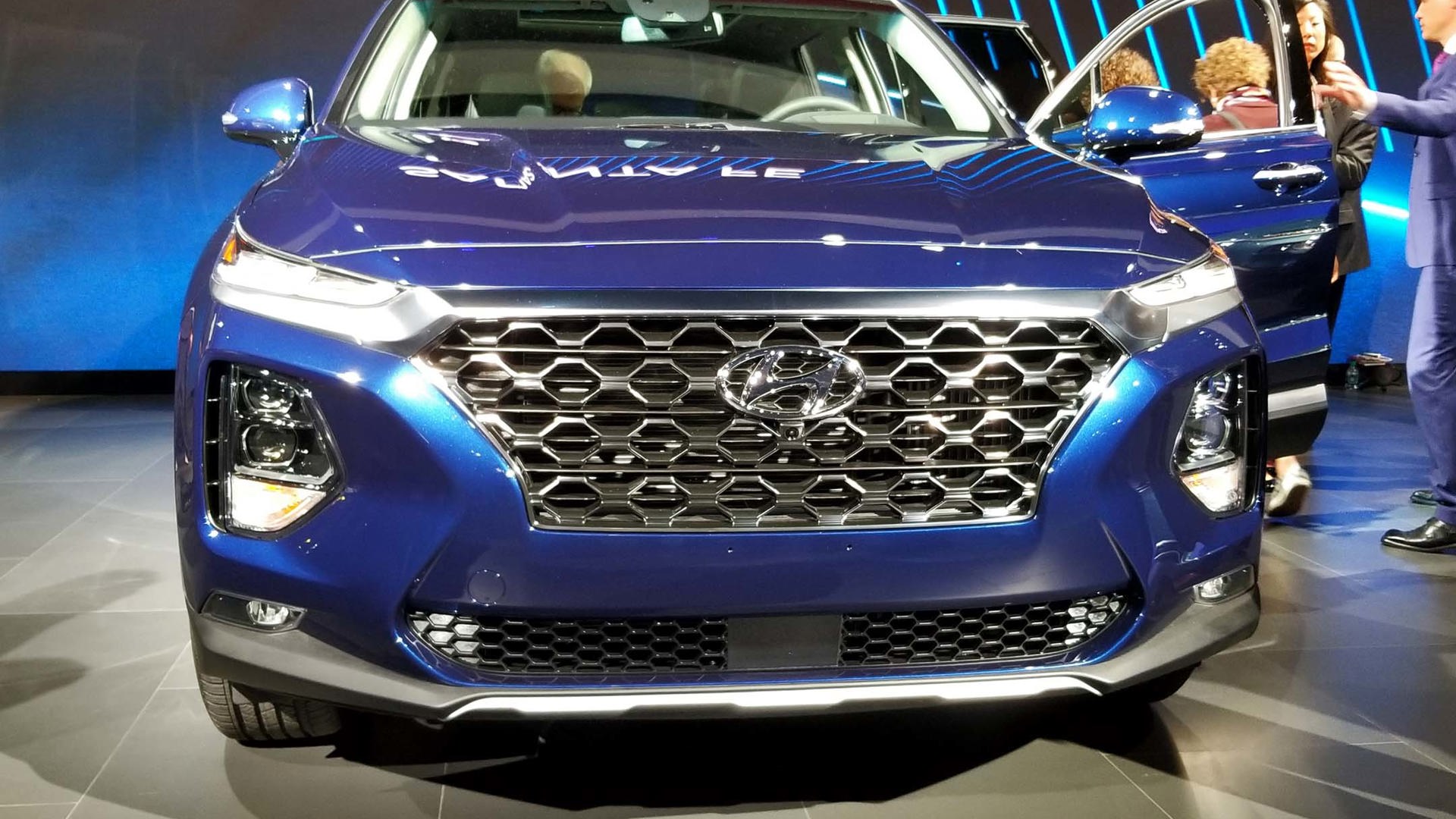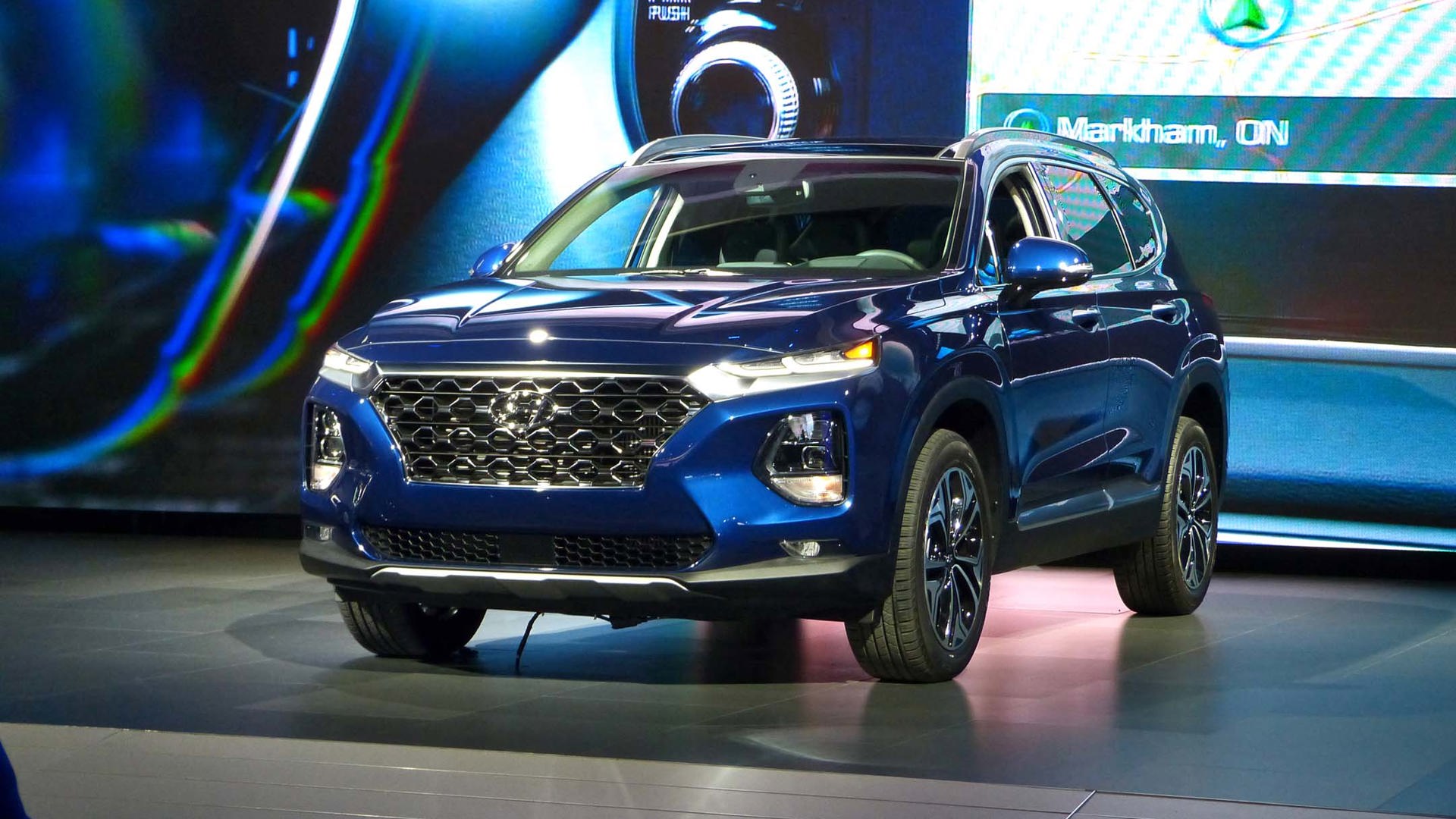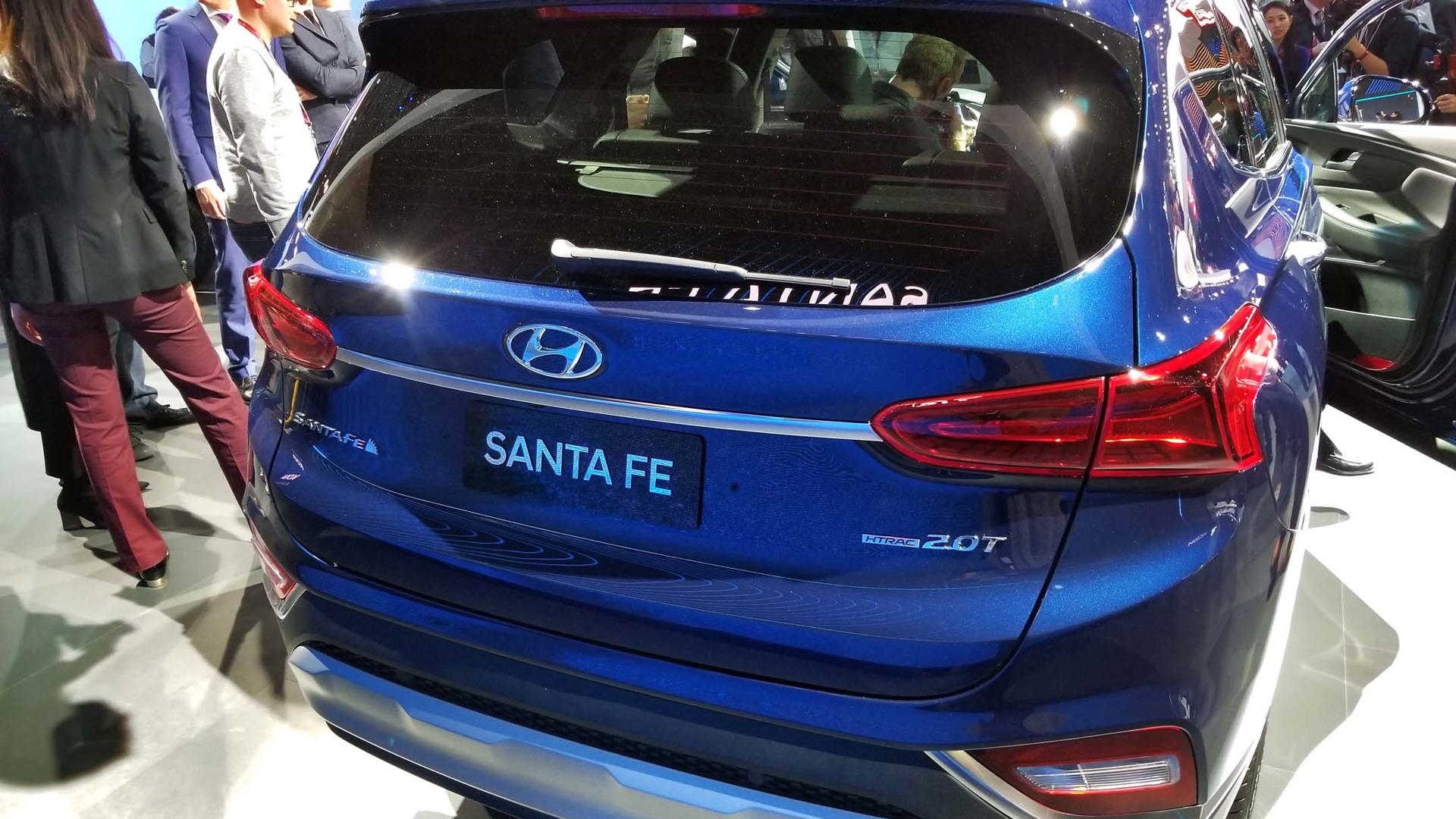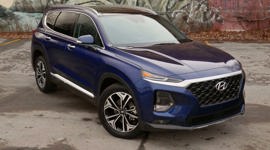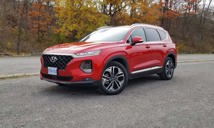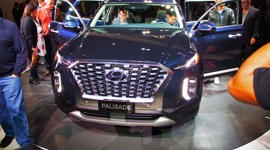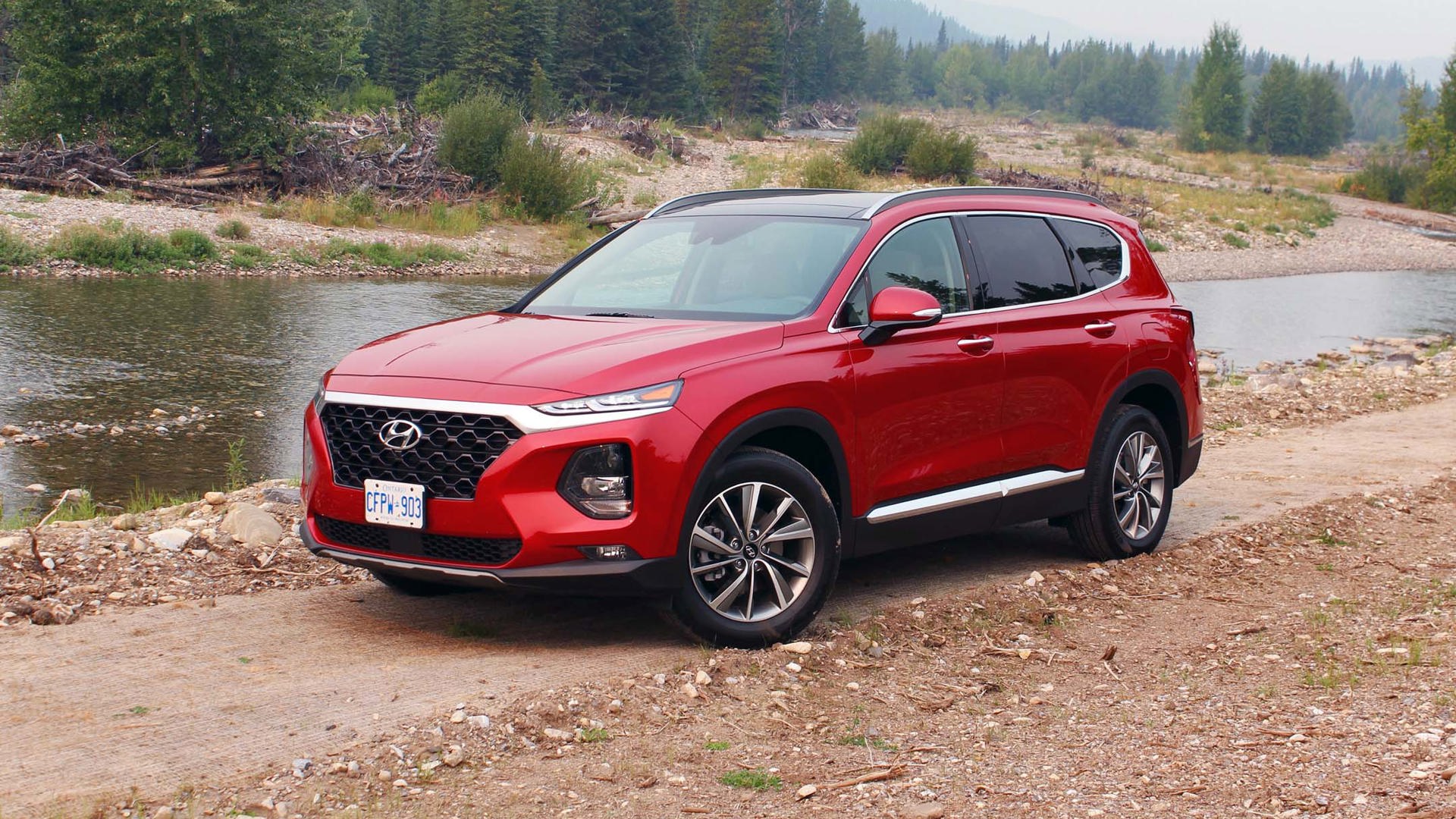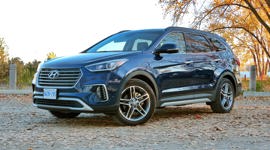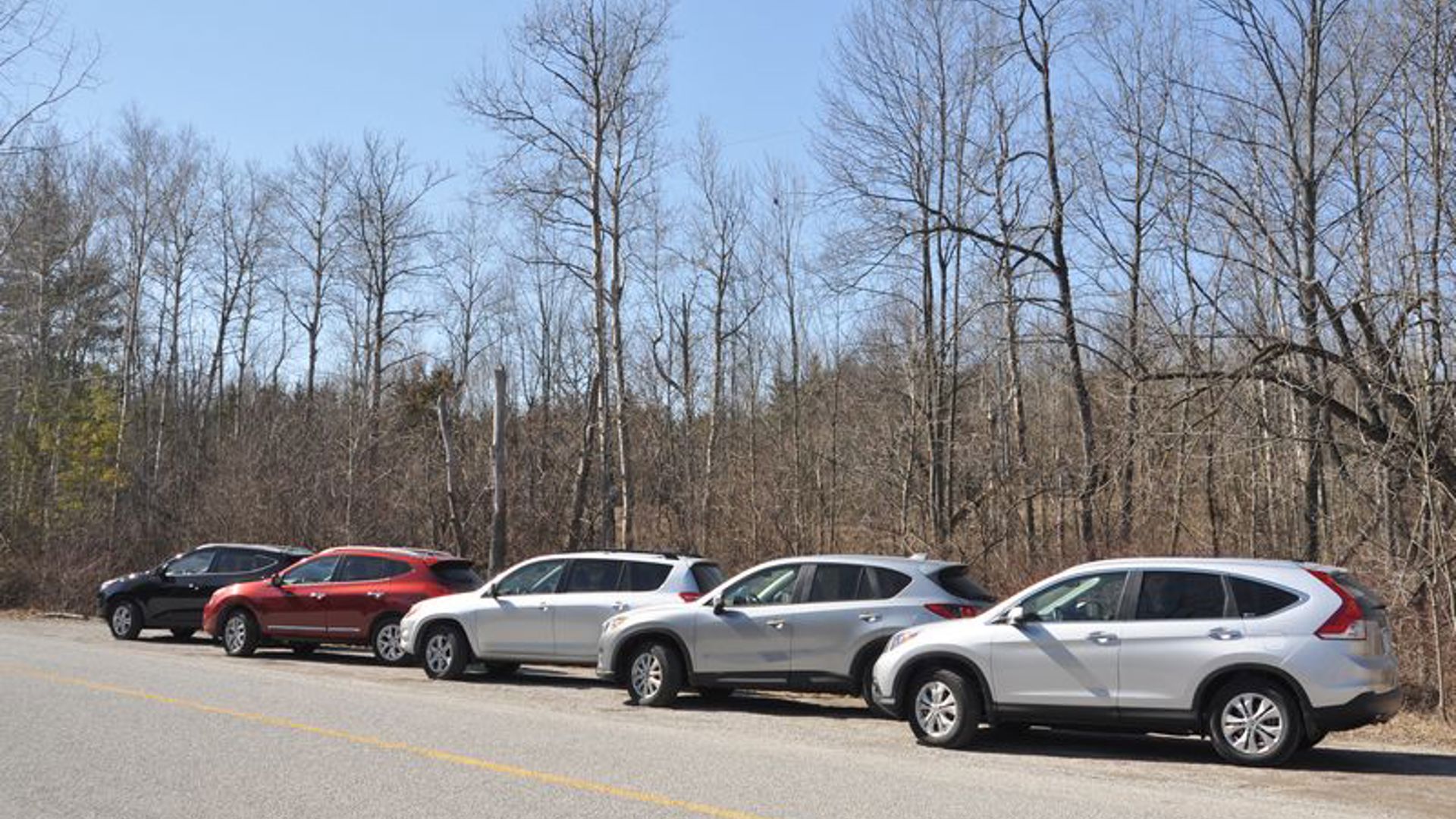The motto here at the New York International Auto Show this year seems to be “beefier is better,” at least as far as crossovers are concerned. Hyundai threw its hat into that ring by showing the 2019 Santa Fe for the first time in North America.
The new Santa Fe replaces the outgoing Santa Fe Sport, which is the five-seat version of the brand’s mid-size SUV. Although the new Santa Fe will also be available in a seven-seat configuration, the current Santa Fe XL – which also seats seven and has a slightly longer wheelbase – is remaining on sale in its current form until the arrival of a new crossover in 2019. Meanwhile, the new Santa Fe will begin arriving in Canadian dealerships at the end of this summer, while the three-row configuration and the new diesel engine will become available early next year.
New Design
This fourth-generation Hyundai Santa Fe incorporates several elements of the brand’s current design language, including a set of slim LED daytime running lights positioned over integrated LED headlights similar to the configuration found on the new Kona. It also introduces a new style of grille that Hyundai calls a “cascading grille”, which gives the front end a more squared-off, beefed-up stance.
It arrives measuring 70 mm longer at 4,770 mm, 10 mm wider at 1,890 mm, and with a wheelbase that’s 65 mm longer at 2,765 mm.
Inside, the size of the rear-quarter glass has been increased by 41 percent to improve sightlines for rear passengers, while the second row has 38 mm more leg room with an 18-mm-higher seat, and the optional third row has 22 mm more headroom.
New Safety Technologies
The arrival of the new Santa Fe marks the launch of several new-to-Hyundai safety technologies, which will become part of Hyundai’s SmartSense suite of active safety and driving assistance technologies.
Rear Occupant Alert can detect movement in the rear seat to determine whether passengers have been left behind and alert the driver by honking the horn and sending a notification via the BlueLink app.
Rear Cross-Traffic Collision-Avoidance Assist monitors for vehicles when the car is reversing and warns the driver if any are approaching. If the driver doesn’t respond, the car automatically applies the brakes.
Safety Exit Assist senses a vehicle approaching from behind and temporarily locks the doors to prevent a passenger from stepping out into moving traffic.
HTRAC All-Wheel Drive System
Hyundai’s HTRAC all-wheel drive system, which was previously only available on Genesis models, will be available on the new Santa Fe.
It works to increase traction on snow, gravel, and regular road surfaces by changing the ratio of torque distribution based on the active drive mode. In sport mode, up to 50 percent of available torque is sent to the rear wheels. In comfort mode, that figure changes to up to 35 percent, and in eco mode, power is sent mainly to the front wheels for improved fuel efficiency. In slippery conditions, the system automatically distributes power to all four wheels automatically.
New Engines, Including Diesel
Three engines will be available for the new Santa Fe, all of which are going to be offered in Canada.
The base engine, a 2.4-litre four-cylinder, makes 185 hp and 178 lb-ft of torque, while the optional 2.0-litre turbocharged four-cylinder puts out 235 hp and 260 lb-ft. Both engines are mated to an eight-speed automatic transmission and will be available at launch this summer.
The diesel engine is a turbocharged 2.2-litre and will be mounted in the three-row model arriving early next year. It will produce 197 hp and 322 lb-ft of torque.
Information and Connectivity
A highlight of the Santa Fe’s new interior is an eight-inch offset infotainment screen, equipped with Android Auto and Apple CarPlay as standard and an optional wireless phone charger. A full head-up display will also be available for the first time on this model.
Availability
Pricing has yet to be announced for any variant of the new Hyundai Santa Fe, but more will be revealed closer to the summer 2018 launch of the two-row gas-powered models and the winter 2019 launch of the three-row diesel.

